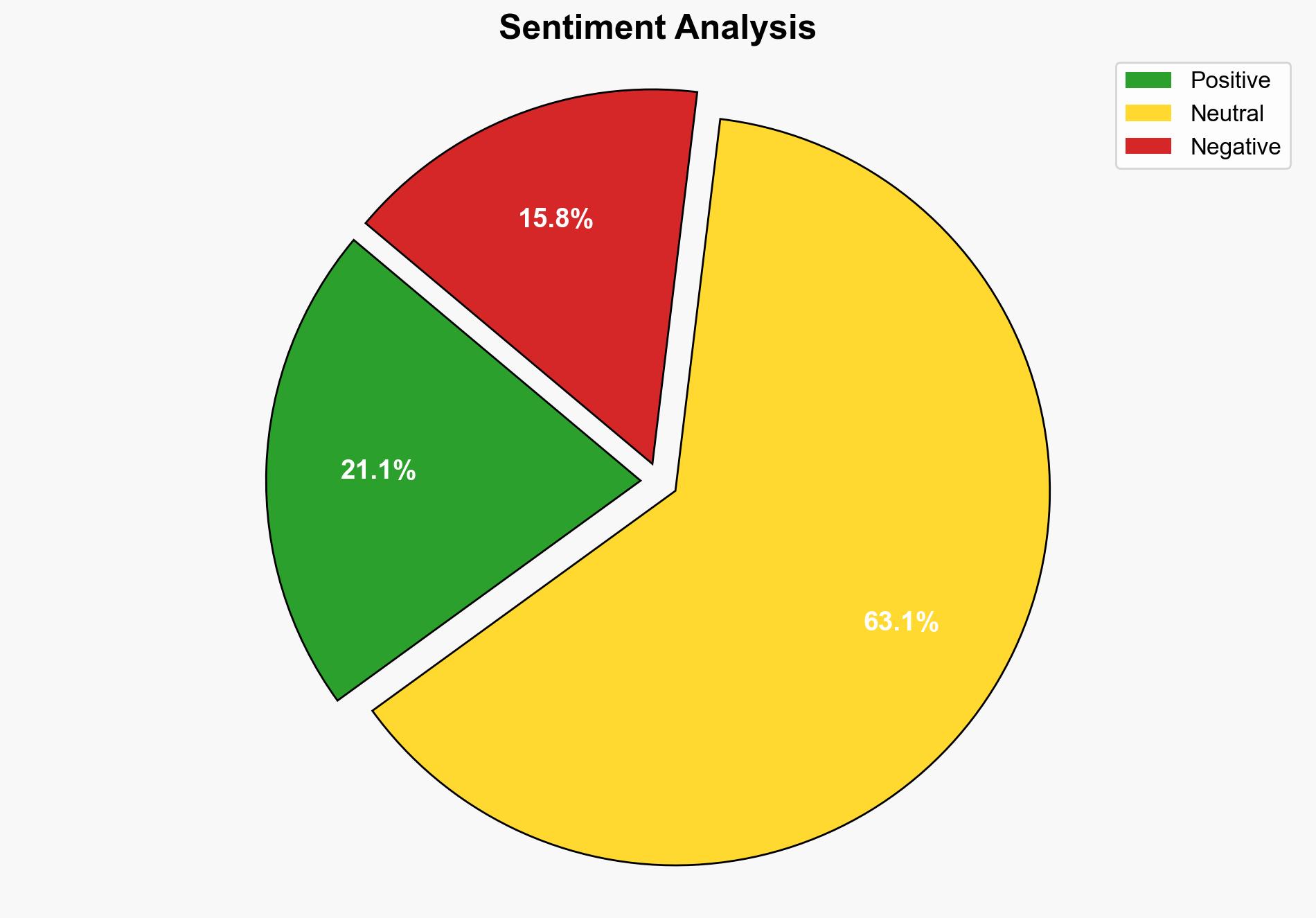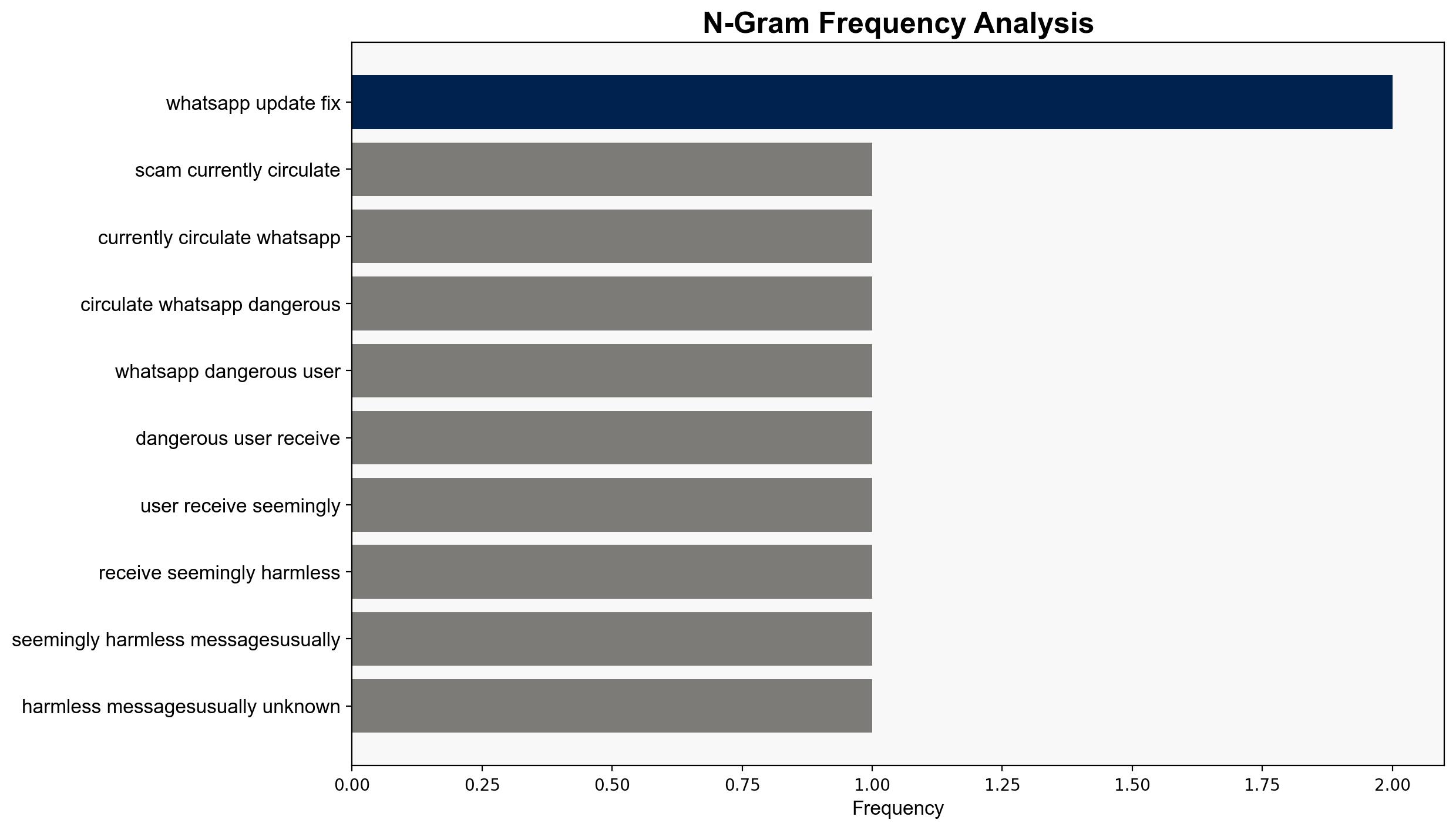Warning Dont open these WhatsApp images else youll get hacked – PCWorld
Published on: 2025-11-07
Intelligence Report: Warning Don’t Open These WhatsApp Images Else You’ll Get Hacked – PCWorld
1. BLUF (Bottom Line Up Front)
The most supported hypothesis is that the WhatsApp image scam is an exploitation of a known vulnerability to distribute malware, with a high confidence level. The recommended action is to enhance user awareness and ensure that all devices have the latest security updates to mitigate this threat.
2. Competing Hypotheses
Hypothesis 1: The scam exploits a specific vulnerability in WhatsApp that allows malicious actors to inject malware through image files, thereby gaining unauthorized access to user data.
Hypothesis 2: The scam is a broader phishing attempt, using WhatsApp as a vector, but not necessarily exploiting a specific vulnerability in the app itself. Instead, it relies on social engineering to trick users into downloading malware.
3. Key Assumptions and Red Flags
Assumptions:
– Hypothesis 1 assumes the existence of a specific technical vulnerability in WhatsApp.
– Hypothesis 2 assumes that user behavior (e.g., downloading files from unknown sources) is the primary vector for the attack.
Red Flags:
– Lack of specific technical details about the vulnerability.
– No mention of a coordinated response from WhatsApp or cybersecurity agencies.
4. Implications and Strategic Risks
The primary implication is an increased risk of data breaches and identity theft for WhatsApp users. This could lead to broader cybersecurity threats, including economic impacts from fraud and potential geopolitical tensions if state actors are involved. The psychological impact includes diminished trust in digital communication platforms.
5. Recommendations and Outlook
- Conduct a comprehensive security audit of WhatsApp to identify and patch vulnerabilities.
- Launch a public awareness campaign to educate users on recognizing and avoiding phishing scams.
- Scenario Projections:
- Best Case: Rapid patch deployment and user education significantly reduce the threat.
- Worst Case: Widespread exploitation leads to major data breaches and loss of user trust.
- Most Likely: Incremental improvements in security and user behavior mitigate the majority of threats.
6. Key Individuals and Entities
No specific individuals are mentioned in the source text. Entities involved include WhatsApp and potentially unidentified malicious actors.
7. Thematic Tags
national security threats, cybersecurity, counter-terrorism, regional focus





